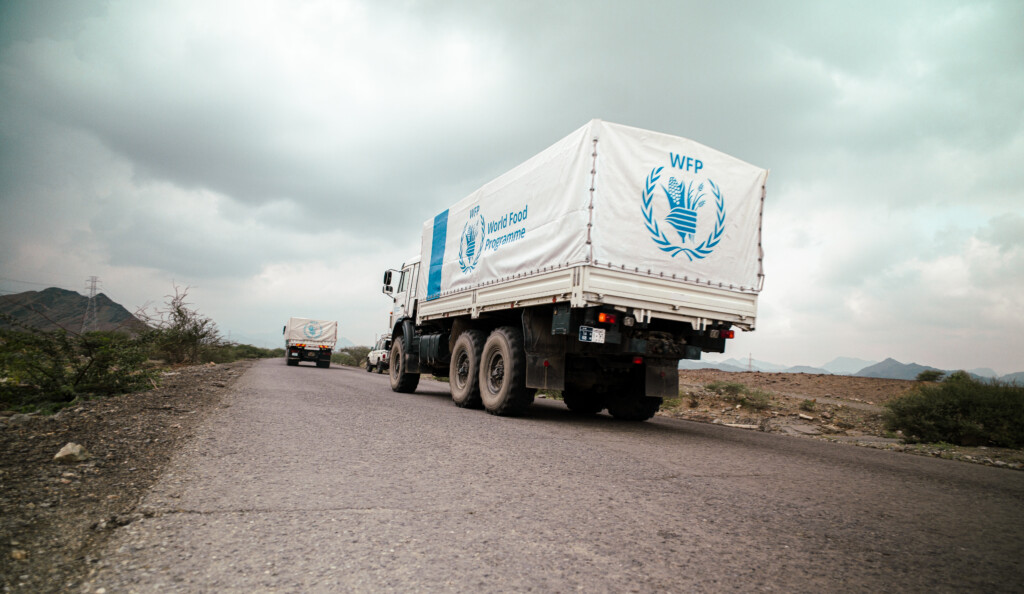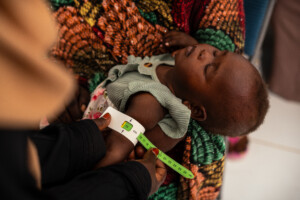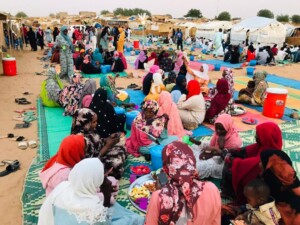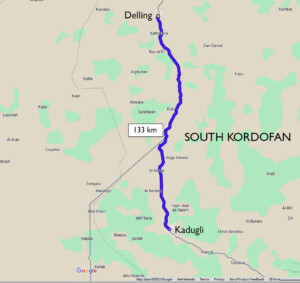First WFP convoy reaches North Darfur camp since famine declared

WFP Convoys heading from Port Sudan to Zamzam, Kadugli and Delling to deliver lifesaving food aid to conflict affected communities in November 2024 (File photo: Supplied / Abubakar Garelnabei)
The first World Food Programme (WFP) convoy arrived at Zamzam camp in North Darfur on Friday, since the declaration of famine in the area three months ago. This marks the start of a major operation to deliver emergency food aid to Sudan’s most vulnerable regions, as the country edges closer to widespread famine amid a war that has yet to show any signs of abating.
According to the recent WFP statement, over 700 trucks, carrying 17,500 tonnes of food, enough to feed 1.5 million people for a month are enroute to communities nationwide, including 14 high-risk hotspots.
WFP Regional Director for Eastern Africa Laurent Bukera called the effort a lifeline, emphasising the need for safe passage and sustained global support. “More than just food, these deliveries represent survival for those trapped by war and hunger.”
The convoy’s delivery, previously hindered by intense fighting and impassable roads during the rainy season, marked a breakthrough after months of logistical barriers.
Sudanese authorities extended the use of the Adré border crossing with Chad, a key lifeline for humanitarian supplies, by three months. WFP has urged for all crossings to remain open to sustain aid flows.
UN Office for the Coordination of Humanitarian Affairs (OCHA) previously emphasised the strategic importance of the Adré crossing, noting that it remains the most effective and direct route for delivering humanitarian assistance at the scale and speed necessary to address Sudan’s deepening hunger crisis.
The WFP assert that since September, they have reached two million people monthly, aiming to expand that number to over eight million by year’s end.
Famine conditions, classified as Integrated Food Security Phase Classification (IPC) Phase 5, the highest level on the IPC Acute Food Insecurity scale, were confirmed in July at the Zamzam displacement camp, leaving thousands of children facing life-threatening malnutrition.
North Darfur displacement
Displacement from El Fasher, the capital of North Darfur, continues amid reports of fierce clashes between the Sudanese Armed Forces supported by the Joint Force (called the Sudanese Joint Force* on social media) and the paramilitary Rapid Support Forces.
Around 385 families, totalling approximately 1,925 individuals, have fled to areas controlled by the Sudan Liberation Movement (SLM-AW), led by Abdelwahid Nur.
Adam Rijal, spokesperson for the Displaced Persons and Refugees Camps Coordination, told Radio Dabanga: “These families are facing severe shortages of food, shelter, clean water, sanitation, healthcare, education, and psychological support.”
South Kordofan delivery criticism
Mubarak Ardol, Sudan’s leader of the Forces for Freedom and Change-Democratic Bloc (FFC-DB), criticised United Nations-affiliated organisations for their method of delivering food aid via aerial drops in South Kordofan, citing inefficiencies.
In a post on X (formerly Twitter) on Saturday, Ardol argued that land convoys are more effective, highlighting issues with scattered and damaged food supplies during airdrops.
He called for improved coordination, using Kadugli Airport as a hub for ground deliveries, particularly to famine-hit areas such as Kartala. “The road used by UNICEF last month is now passable,” Ardol noted, advocating for secure land routes.
* The Darfur Joint Force was formed in June 2022, as agreed on in the 2020 Juba Peace Agreement (JPA), to protect the people in the region. The force was made up of fighters of the Sudan Liberation Movement faction headed by Darfur Governor Minni Minawi (SLM-MM), the JEM faction led by Finance Minister Gibril Ibrahim (JEM-GI), and several small rebel groups that signed the JPA. These movements renounced their neutrality in November last year and are now fighting the RSF alongside the Sudanese army. Since then, Sudanese media speak about the Joint Force of Armed Struggle Movements, while the group’s logo on their X and Facebook accounts says Sudanese Joint Force (and in Arabic Sudanese Joint Forces).











 and then
and then